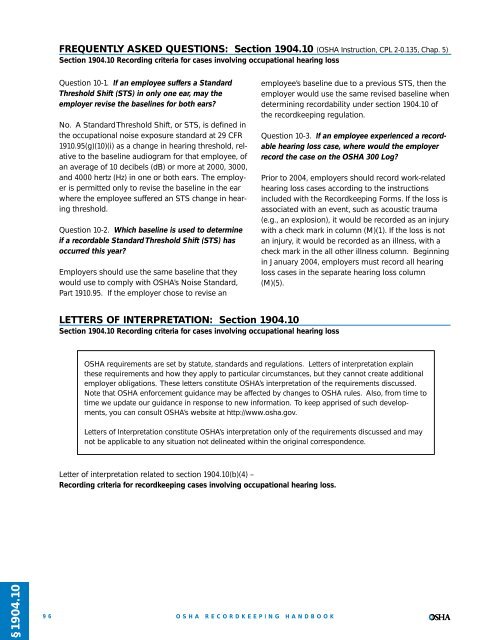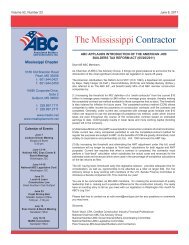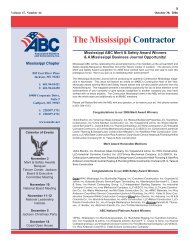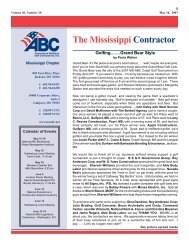OSHA Recordkeeping Handbook - Msabc.net
OSHA Recordkeeping Handbook - Msabc.net
OSHA Recordkeeping Handbook - Msabc.net
You also want an ePaper? Increase the reach of your titles
YUMPU automatically turns print PDFs into web optimized ePapers that Google loves.
FREQUENTLY ASKED QUESTIONS: Section 1904.10 (<strong>OSHA</strong> Instruction, CPL 2-0.135, Chap. 5)Section 1904.10 Recording criteria for cases involving occupational hearing lossQuestion 10-1. If an employee suffers a StandardThreshold Shift (STS) in only one ear, may theemployer revise the baselines for both ears?No. A Standard Threshold Shift, or STS, is defined inthe occupational noise exposure standard at 29 CFR1910.95(g)(10)(i) as a change in hearing threshold, relativeto the baseline audiogram for that employee, ofan average of 10 decibels (dB) or more at 2000, 3000,and 4000 hertz (Hz) in one or both ears. The employeris permitted only to revise the baseline in the earwhere the employee suffered an STS change in hearingthreshold.Question 10-2. Which baseline is used to determineif a recordable Standard Threshold Shift (STS) hasoccurred this year?Employers should use the same baseline that theywould use to comply with <strong>OSHA</strong>’s Noise Standard,Part 1910.95. If the employer chose to revise anemployee’s baseline due to a previous STS, then theemployer would use the same revised baseline whendetermining recordability under section 1904.10 ofthe recordkeeping regulation.Question 10-3. If an employee experienced a recordablehearing loss case, where would the employerrecord the case on the <strong>OSHA</strong> 300 Log?Prior to 2004, employers should record work-relatedhearing loss cases according to the instructionsincluded with the <strong>Recordkeeping</strong> Forms. If the loss isassociated with an event, such as acoustic trauma(e.g., an explosion), it would be recorded as an injurywith a check mark in column (M)(1). If the loss is notan injury, it would be recorded as an illness, with acheck mark in the all other illness column. Beginningin January 2004, employers must record all hearingloss cases in the separate hearing loss column(M)(5).LETTERS OF INTERPRETATION: Section 1904.10Section 1904.10 Recording criteria for cases involving occupational hearing loss<strong>OSHA</strong> requirements are set by statute, standards and regulations. Letters of interpretation explainthese requirements and how they apply to particular circumstances, but they cannot create additionalemployer obligations. These letters constitute <strong>OSHA</strong>’s interpretation of the requirements discussed.Note that <strong>OSHA</strong> enforcement guidance may be affected by changes to <strong>OSHA</strong> rules. Also, from time totime we update our guidance in response to new information. To keep apprised of such developments,you can consult <strong>OSHA</strong>’s website at http://www.osha.gov.Letters of Interpretation constitute <strong>OSHA</strong>’s interpretation only of the requirements discussed and maynot be applicable to any situation not delineated within the original correspondence.Letter of interpretation related to section 1904.10(b)(4) –Recording criteria for recordkeeping cases involving occupational hearing loss.§1904.1096<strong>OSHA</strong> RECORDKEEPINGHANDBOOK







